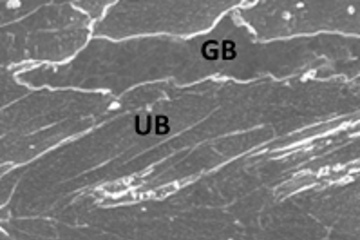All genres
1121.
Talk
A multiscale study of the Hydrogen enhanced local plasticity (HELP) mechanism. Asia Steel Conference 2009, Busan, South Korea (2009)
1122.
Talk
First Principles Predictions of Stacking Fault Properties in FeMn Alloys. Asia Steel Conference 2009, Busan, South Korea (2009)
1123.
Talk
Multi-Scale Computational Materials Design of Structural Materials: First-Principles Calculations. Workshop at Pohang University of Science and Technology, Pohang, South Korea (2009)
1124.
Talk
Ab initio based multiscale modeling of engineering materials: From a predictive thermodynamic description to tailored mechanical properties. Asia Steel Conference, Busan, South Korea (2009)
1125.
Talk
Ab Initio Based Multiscale Modeling of Engineering Materials: From a Predictive Thermodynamic Description to Tailored Mechanical Properties. Colloquium at TU Bergakademie Freiberg, Freiberg, Germany (2009)
1126.
Talk
Challenge and opportunities for the European Steel Industry. Asia Steel Conference, Busan, South Korea (2009)
1127.
Talk
Wasserstoff in X-IP Stahl (ab initio) Einfluss von Defekten auf die Energetik und Dynamik von Wasserstoff in Manganstählen. X-IP Workshop, Dortmund, Germany (2009)
1128.
Talk
What can EPR hyperfine parameters tell about the Si dangling bond? - A theoretical viewpoint. 1st International Workshop on the Staebler-Wronski effect, Berlin, Germany (2009)
1129.
Talk
Multi-scale modeling of the phase stability of interstitial Fe-C solid solutions. Invited talk at MPI for Metal Research, Stuttgart, Germany (2009)
1130.
Talk
Universal trends for the solubility of hydrogen in non-magnetic 3d transition metals derived from first principles. DPG Spring meeting, Dresden, Germany (2009)
1131.
Talk
Ab initio up to the melting point: Anharmonicity and vacancies in aluminum. DPG Früjahrstagung, Dresden, Germany (2009)
1132.
Talk
First principles determination of phase transitions in magnetic shape memory alloys. DPG Spring Meeting 2009, Dresden, Germany (2009)
1133.
Talk
Effect of interstitial carbon on the magnetic structure of fcc iron: Towards an ab-initio understanding of austenitic steels. DPG Spring Meeting 2009, Dresden, Germany (2009)
1134.
Talk
The free energy of iron: Integrated ab initio derivation of vibrational, electronic, and magnetic contributions. DPG Spring Meeting 2009, Dresden, Germany (2009)
1135.
Talk
Role of the parasitic Mg3N2 phase in post-growth activation of p-doped Mg:GaN. DPG Frühjahrstagung, TU Dresden, Germany (2009)
1136.
Talk
Multi-physical alloy approaches to solid solution strengthening of Al. Deutsche Physikalische Gesellschaft 2009, Dresden, Germany (2009)
1137.
Talk
Application of an eight-band k.p model to study III-nitride semiconductor. DPG Spring Meeting 2009, Dresden, Germany (2009)
1138.
Talk
Ab-initio calculations of hyperfine parameters for various Si-dangling bond models. DPG spring meeting, TU Dresden, Germany (2009)
1139.
Talk
Role of anharmonic contributions for the elasticity of ice. Fruehjahrstagung der Deutschen Physikalischen Gesellschaft, Dresden, Germany (2009)
1140.
Talk
An atomistic study of low-C tetragonal Fe-C states. DPG Spring Meeting 2009, Dresden, Germany (2009)











